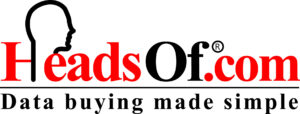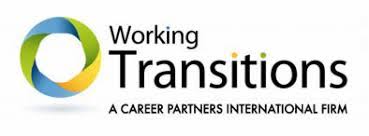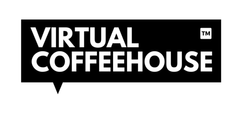FAQ
Lorem ipsum dolor sit amet, consectetur adipiscing elit. Ut elit tellus, luctus nec ullamcorper mattis, pulvinar dapibus leo.
Email marketing, with over 4 billion user base is still the best marketing channel for digital communication. It means sending commercial emails to a group of people. Email marketing is used to drive sales, increase business, advertisements, and information or build a brand community. The 2021 Direct Marketing Association report on email marketing effectiveness estimated a return on investment of $50 (£38) for each $1.50 (£1) invested.
Email marketing is still considered the most effective, reliable, and cost and time-efficient means of communication. According to Litmus, 2021 was the year of email- marketing for everyone. Email marketing of B2B and B2C product and services through effective campaigns can increase the loyalty of the customers and also helps to build an everlasting impression of the brand.
Social media marketing is a powerful tool for building an email list of interested consumers and converting them into paying clients through email marketing. The conversion rate via email marketing is 6.05% and social media marketing is 1.9% only. In addition, the open click-through and engagement rate of email marketing is 22.8% and social media marketing stands at only 0.58%, which makes email marketing the most effective channel of communication.
Yes, Newsletter is important in the marketing toolkit for brand marketing as it creates a strong understanding, knowledge enhances the target audience, refers to trending topics, creates engaging designs and content, and develops authority over products or services offered. These factors lead to and help businesses connect and convert potential customers, increase sales, and build strong brand marketing vis a vis brand image.
Among all marketing channels, email marketing is the most affordable with the rate of investment (ROI). Almost 60% of consumers subscribe to email newsletters while only 20% prefer social media platforms for promotional news of their favourite brands. Therefore, email marketing is the most cost-effective means of digital communication even in the era of social media.
The best practice is to send the marketing emails twice a month and then increase the frequency to weekly emails. Almost 26.7% of marketing strategists prefer monthly emails while 33.3% prefer weekly emails. Only 13.3% vouch for daily emails since these tend to disengage clients who unsubscribe or spam to email marketing founding it annoying.
The best day of the week to send the marketing emails are Tuesdays and Thursdays. The best time is 8 am to 10 am while people leave for their work or around 4 pm to 7 pm in the evening. The emails sent during these hours result in a high click-through rate of 7.7% and the highest open rate of 32.2%.
As per Deliverability Benchmark Report by Validity, 20% of marketing emails end up in a spam folder. However, it can be avoided by keeping the mailing list clean, getting confirmation of marketing e-mails from subscribers, option to unsubscribe for recipients, avoiding spam trigger words, using an authentic Email Service Provider (ESP), avoiding attachments, and inserting brand identifiers for the email recipients.
HTML emails should be used because they entail style, graphics, images, formatting, and multimedia which plain text email formats completely lack. Though, HTML emails have compatibility issues while plain text emails are reliable in respect of deliverability. Yet, HTML emails supersede in terms of visual display, better user experience, user engagement through multimedia content, and brand consistency.
Ideally, marketing emails should have 50 to 125 words with a response rate of 50% while emails with a higher or lesser number of words result in less click-through rate, and hence their effectiveness in reaching potential clients diminishes. However, the impact of the email can be enhanced with appropriate images and pictures.
Great marketing emails should have a persuasive subject line. It should start with a greeting and must have a solid attention grabber. The message should be concise. It also has a simple closing and consistent font. A great marketing email should reflect the personality of the business and must be written in a clear and concise manner.
Market segmentation refers to the creation of sub-groups based on shared characteristics out of a large population. The emails can be segmented into five broad categories which are psychographic, demographic, geographic, behavioural, and firmographic. This segmentation leads to the personalisation of marketing emails which results in a 20% increase in sales and 67% engagement and retention.
Email marketing metrics reflect the optimisation of the marketing strategy. These metrics include click-through rate (CTR), conversion rate, bounce rate, email forwarding rate, list growth rate, rate of investment (ROI), spam complaints, domain open and click rate, and rate of subscription. All these metrics when combined are the key performance indicators of the success or failure of email marketing strategy.
The number of subscribers opening the emails is gauged in terms of email open rate. To achieve a higher email open rate, the email’s subject line should be catchy and brand-oriented to create curiosity. Double opt-in and personalised emails determine the cadence and preference of the subscribers. Introduction of the sender and using the first name of the recipient also increases the credibility of the emails and keep subscribers engaged.
Email subject lines are gatekeepers and they optimise the email marketing to 47%. A catchy, unique, and curiosity-oriented subject line starts with action-oriented verbs by asking a question, issuing a command, sending a teaser, or making an announcement. It should induce a sense of scarcity and urgency and must be short and straightforward.
Click-through rate (CTR) refers to the ratio of the number of clicks on a call to action (CTA) or a specific link. Using long-tail keywords in headings and titles increase CTR. Effective meta-descriptions with powerful language, use of images within the emails, descriptive URLs, rich snippets, and localisation of content are a few methods to achieve higher CTR.
A great call to action (CAT) is a digital tool of email marketing that helps companies convert and capture sales and build the customer base. A good call to action entails a strong command verb and words that evoke enthusiasm, a reason for readers to take the desired action, a fear of missing out (FOMO), and mentions prices, discounts, etc.
The from the line is the last piece of communication in digital marketing. It should include a closing line with a call to action, followed by the name of the sender, professional title or designation, and contact information. It should include formal phrases like sincerely, regards, thank you, etc. and informal phrases like cheers, peace, your friend, etc. should be avoided.
Email marketing software helps to track the emails, collect business contact data and use it strategically to devise marketing and business strategies. It also facilitates conversation to build relationships, provides real-time notification, creates an automated workflow, authenticates contact, and increases the delivery rate to 98%while increasing ROI (rate of investment). Email accuracy can be monitored and scheduled emails help in follow-ups.
Forwarding or share rate is the rate at which the email recipients share the email with friends through the shared button or forward it. It is calculated by dividing the number of shares by the total number of emails delivered. The churn rate is the percentage of users who unsubscribe from the mailing list within a given timeframe. It is calculated by dividing unsubscribes, soft bounces, hard bounces, inactive subscribers, and spam complaints by the total number of subscribers.
As a national standard to regulate spam emails, the CAN-SPAM Act was enacted by US Congress in 2003. This enactment established the pre-requisites of commercial messages, electronic mails, and commercial advertisements for promotion purposes, by setting the rules for commercial emails, and also provides the right to recipients to make commercial entities stop sending them emails, and has tough penalties for such violations.
The Call-to-action (CTA) can be improved by including action verbs and authoritative language that drives the people to click or join. It can also be improved by provoking enthusiasm and emotion. FOMO can be used in order to take advantage. Make it more creative. There must be a reason that forces the audience to take action.
Email personalisation uses the data about subscribers to make it look custom-made and it leads to a 26% higher open rate than the ordinary emails. Personalised emails should be segmented, include the sender’s details, make recommendations based on previous purchase data of the client, and introduce special offers. Milestone emails and re-engagement emails are also good tools for email personalisation.
The images and text in emails should be used according to the Pareto principle (80-20 rule). This is because certain people block the external resources (images). So, 80% text and 20% images should be used and images should be used with purpose. Make sure if the images are blocked then the email should be still readable to the client.
The click-through rates can be increased to 127% with call-to-action buttons. Generally, there should be two calls to action in an email campaign. Frist or primary call to action compels the visitors to take the desired action by clicking on it and mainly focuses on the conversion rate. A secondary call to action aims at nurturing the lead and helps visitors know more about the marketing campaign, product or service offered.
Email marketing is very cost-effective in comparison with other marketing channels. B2C email marketing requires prior consent but B2B marketing generally does not. When running B2B campaigns, it is important to make clear who you are and which organisation you represent, to provide an “unsubscribe” facility and to ensure the content of your marketing is relevant to the recipient. Design flexibility and scalability are also advantages of email marketing. On the other hand, undelivered and spam emails are the main disadvantages. Resources and design issues are also disadvantaged for multiple devices, for effective email marketing one must have the right design, copy, and B2B contact list UK.
Email marketing activities compared to other digital marketing platforms are personal. When one has a B2B contact list that means an amount of trust from others. Email marketing is time consuming and it is efficient only when it is timely, relevant, and engaging. If one cannot manage the time and workload then outsourcing email marketing activities can be the best option.
There are four major types of marketing emails. Email/Digital newsletters are used to educate about a targeted domain or industry. They are scheduled and sent on timely basis and are subscribed by users. Product update emails are used to inform the customers about the latest updates about the products or services. The transactional emails are focused on action taken and they address one customer or user. These includes order/billing emails etc. Informational emails can be used to promote services, products and events.
The use of automation in email marketing is a powerful tool that can send an effective message to the consumers/people at right time. It can eradicate the need of personalising and sending marketing emails manually. One can use the B2B data list provider for effective and automated workflows that can help in lead nurturing, which results in ultimately sales drive.
The email shows a permanent error and cannot be delivered in a hard bounce. While in soft bounce an email indicates a temporary technical problem or issue with the recipient server. This is the difference between hard and soft bounce emails. One can use the best B2B database providers to shield email-sender reputation. It helps to exclude the contacts in future emails.
The expected results from the email campaign depend on the following factors. The most important is the bounce rate on the landing pages. The second crucial factor is the email conversion rate along with the website traffic. Email list growth rate is also very important for desired results and for this, one can use the B2B contact list or HR contacts data that results in a better forward/share rate. Above are also the technicalities that can be taken care of when it comes to a successful email campaign.
The priorities in an email checklist are crucial for effective email marketing. The first one is email deliverability which ensures the landing of the emails in the inbox. The second one is email personalisation which helps to generate an ideal audience. It works at all levels of the customer funnel. The next priority is email automation which around 59% of marketers use to increase productivity. Brand indicators for message identification and data hygiene are also among the top 5 priorities in an email checklist that helps conversions and consistency.
The Click-through Rate is considered to be good if it is in between the range of 5 to 6 percent. But for the best email marketing, the email marketers should aim for 15 %. According to a study at Jilt, transactional and automated emails can achieve a higher Click-through Rate then general CTR. A general CTR can be 1.92% for search and 0.37 for display.
The template samples can be found in email software also. One can enable them by going into the settings, advanced section, and then they are in the template section. On the other hand, they are also available all over the internet with amazing designs and stunning flawless codes. These email template samples grab the attention of the customers and are handy in email marketing campaigns.
The unsubscribe button or link is placed at the footer of the mail which enables the mail recipients to unsubscribe from the email newsletters and emails etc. According to the CAN-SPAM Act, all digital and commercial marketing companies and businesses must give the right to unsubscribe from their emails if they don’t want to receive them anymore. Moreover, it also reduced the rate of spam emails for digital marketers.
The bounce rate reflects the percentage of rejected emails and it may be either a soft bounce or hard bounce due to temporary failure or permanent failure to deliver the email. The use of verified opt-in and permission-based data of email recipients and registered domain of email sender decreases the bounce rate. Cleaning the email list, verification of email addresses in real-time and automatic synchronisation of email clean-up with the database also minimizes the bounce rate
For B2B and B2C email marketing, spam filters identify the source IP and domain for any complaints and if there are some, the email is marked spam. The spam filters also identify the blacklists, which are IP addresses used by spammers or spam infrastructure, and spam traps, the locked email addresses which end up in online bulk email lists, also trigger the spam filters. Some content spam filters identify the words like discount, offer, limited time, etc. as spam and block emails from the inbox.
A/B testing or split testing is a marketing technique wherein the audience is split into two and exposed to two different contents or aspects of the marketing campaign to evaluate which one of the two performs better. A/B testing must be performed when the website is redesigned, a plugin, feature, or service of the website is changed, or when the pricing is changed. It is also carried out to increase the revenues or when one feels that the conversion rate is lesser than expected.
The subject line for optimum open, click, and conversion rate should be between 41 characters and 7 to 8 words only. However, it should not be more than 9 words or 60 characters. There should be no more than three punctuations in the subject line. The brief subject lines tend to have a 47% open rate in B2C email marketing campaigns.
A recent study based on an analysis of 115 million emails found that the subject lines with numbers have higher open and reply rates as they deliver a clear message to the readers and draw their attention. On the other hand, special characters are reported to increase the open and click rates, yet these should be used carefully in subject lines and must be well-placed to get desired results.
While the use of mobile devices has increased up to 30% from 2010 to 2015; 68% of email campaigns are opened on mobile phones. Almost 75% of users use mobile devices to open emails and 75% of subscribers delete emails when these are not optimised or readable on mobiles. Therefore, the emails should be mobile responsive to get a high open and conversion rate.
Ideally, there should be 80% text and 20% images as per the Pareto principle. The statistics show that emails with two to three images and 17 to 20 lines of text result in higher click-through rates than emails with either higher text or images. Therefore, there should be a balanced text-to-image ratio to avoid spamming and a high click-through rate.
Normally an unsubscribing rate below 0.5% is a good unsubscribing rate although a rate higher than this reflects that the email marketing campaign needs some extra effort. While the average unsubscribing rate of 0.17% and unsubscribing rate below 0.2% is considered a marketing norm.
Ideally, there should not be more than five links in the content. So, you can include up to five links in the content. To grab the attention of all readers equally, the content should be brief, readable and directly address them. The content must compel the readers to click the links to know further and it should not be repetitive of what is being informed through the links.
Yes, the polls help run successful marketing campaigns. The polls in the email campaigns make them interactive and result in a higher engagement rate resulting in 17 times higher click-through rates and 6 times transaction rates. In order to increase the interaction with the email recipients, polls can be used successfully.
Why and how should I segregate my list?
The segregation of email lists is a technique that is used to aim the highly targeted emails. The segregation divides the list into small segments or groups. It helps to send more relevant, targeted, and personalised emails. On one hand, it can boost click and email open rates while on the other hand, it can reduce the unsubscribe rates. To segregate the list, the data points should be defined to create persons for the segments which result in higher ROI, conversion, and sales.
The important laws related to email marketing are the CAN-SPAM Act by US Congress, the Canada Anti-Spam Legislation (CASL), General Data Protection Regulation (GDPR) by European Union, and California Consumer Protection Act (CCPA), etc. The main purpose of these laws is to protect the data, and privacy of the email recipients, control spamming, and take the consent of the recipients before sending commercial and promotional emails.
Emails can be made look better with different techniques and the most important is branding. In addition, it should be responsive and mobile-friendly and must have a professional layout and design elements. Visual elements like images, multimedia, graphics, fonts, and style also raise the readability quotient. Important content elements like links, subject matter, landing pages, and CTA buttons also make emails look better.
Some of the latest trends in email marketing include personalisation of emails, user-friendly mobile interface experience, appreciation emails like birthday and anniversary wishes, appreciation of user experience, use of real images and locations, automation of email marketing, use of artificial intelligence, and last but not the least focus on privacy. These recent trends are leading to more interactive and B2B or B2C-oriented email marketing campaigns.

About HeadsOf.com
HeadsOf.com is a global database of information on 25 million business professionals across 10 job disciplines and hundreds of job titles in the private, public and not-for-profit sectors across the world.
And, if your horizons stretch further afield, we have got that covered too. We provide data for 75 countries across six continents. So, however, far or near your targeted contacts, we can deliver what you’re looking for.
As a result, we have data pinpointing hundreds, if not thousands, of contacts listed in your local area, town, city, county, state, province, or just up the road.
Testimonials
What our clients are saying
Purchasing data is always a minefield – we have used several providers in the past and have struggled to find the quality and accuracy we need.
The team behind AlertBI’s HeadsOf.com service are helpful and responsive – they always deliver to our brief and the data they provide is of a very high quality - we always experience a very low bounce rate.
They are now a trusted and preferred partner.
The team behind AlertBI’s HeadsOf.com service are helpful and responsive – they always deliver to our brief and the data they provide is of a very high quality - we always experience a very low bounce rate.
They are now a trusted and preferred partner.
We began using Alert BI's HeadsOf.com division as a source of key contacts data during 2021. From the start, communications have been quick, professional, and easy. Data quality is high and great value for money. Their information covers the USA market brilliantly (we are based in California) and also Europe where we have expansion plans. Highly recommended.
SR Apprenticeships have had a great experience working with HeadsOfHR.com. Unlike most other providers, all their contacts data is freshly researched and validated just before it’s sent to clients, so it’s not been sitting on the shelf going stale. Their list of ‘heads of’ roles is extremely comprehensive so we were able to target just the right people, and supplementary advice on marketing campaigns and GDPR is readily available.
We use Alert most days and are finding lots of fresh information. The Alert team are always on the ball and customer service and support is great too
“We have experienced a 20-fold return on our investment in Alert’s services and are reaping other ongoing benefits, including enhanced credibility with customers and improved productivity.”
“Alert saves us valuable time identifying target organisations and complements our sales strategy perfectly.”
We needed to reach out to senior HR personnel as well as people in job roles to do with learning, emotional health and wellbeing.
HeadsOfHR.com seemed to be the only company that could provide contacts data that specific, and in the quantity we required.
Their business advisers are knowledgeable and not pushy salespeople.
We bought the data, found the quality was high and the service and communications were great. Highly recommended.
HeadsOfHR.com seemed to be the only company that could provide contacts data that specific, and in the quantity we required.
Their business advisers are knowledgeable and not pushy salespeople.
We bought the data, found the quality was high and the service and communications were great. Highly recommended.
“I whole heartedly recommend Alert Business Intelligence for the best B2B data you can get anywhere – bang up-to-date, accurate, incredibly detailed, precision targeted and very easy to use. Alert’s data and customer service were a revelation.”
“We discovered HeadsOf.com via a Google internet search when looking for a HR contacts database. As well as general HR contacts they cover more specialist roles such the HSQE staff we had an interest in. The service and communications were quick and professional and the sample data was good - we purchased a dataset and have been busy communicating with that audience. The information is good. We also valued the advice the HeadsOf.com team provided about producing email content to maximise its impact, and the guidance about how best to set up and execute campaigns over the critical first three months of campaigning. Highly recommended..”
Clients we have worked with
We work with organisations and budgets of all sizes across the private, public and not-for-profit sectors globally. Our clients range from start ups and sole traders through to SMEs and global organisations such as: Google, Manpower, Mars, Trinity Mirror, Barclays, The Bank of England, IBIS and Hays.





















About Our Company
HeadsOf.com is a division of Alert Business Intelligence (AlertBI). Data that can be trusted should be at the heart of every business decision. Discover how HeadsOf.com and Alert BI’s range of other data , insights an.. Read More
Contact Info
European Office:
Alert Business Intelligence 20 - 22 Wenlock Road, London, N1 7GU, United Kingdom
North American Office:
Alert Business Intelligence 90 Broad Street, New York NY, United States 10004
Asian Office:
Alert Business Intelligence MBFC Tower, 12 Marina Boulevard, Singapore, 018982
- +44 (0) 20 8798 0405
- enquiries@alertbi.com
- Company No - 12141293







